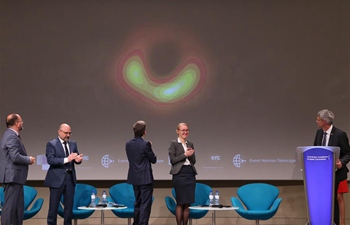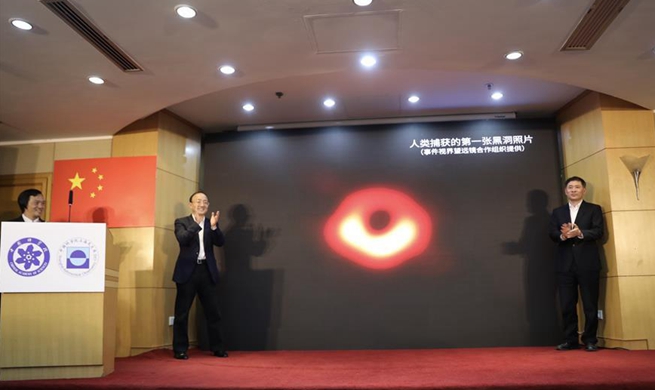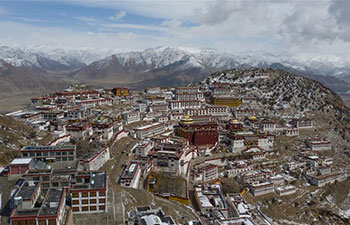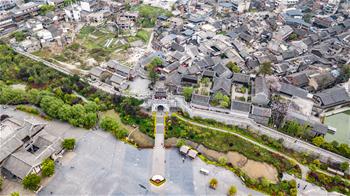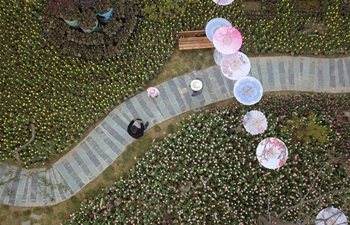SANTIAGO, April 10 (Xinhua) -- Scientists have captured the first-ever image of a black hole thanks to the Event Horizon Telescope (EHT), an Earth-sized virtual telescope network linking eight telescopes around the globe, experts announced here Wednesday.
The black hole lies in the center of a distant galaxy identified as Messier 87, located 55 million light-years from Earth, and has a mass 6.5 billion times that of the Sun, they said.
"This long-sought image provides the strongest evidence to date for the existence of supermassive black holes and opens a new window onto the study of black holes, their event horizons, and gravity," they said.
The announcement of the breakthrough was made on Wednesday at six simultaneous press conferences held around the world, including Chile, which deployed two of the ground-based radio telescopes.
Xavier Barcons, director general of the European Southern Observatory (ESO) in Chile, said he was satisfied with "having contributed in a significant way to this outcome."
The ESO's two telescopes in northern Chile's Atacama Desert, over 5,000 meters above sea level, played a "fundamental" role in capturing the image, Barcons said.
One of the telescopes, the Atacama Large Millimeter/submillimeter Array (ALMA), is the most powerful within the EHT network, Barcons said.
The ALMA "really helped to guarantee the high-quality calibration of the data from each of the other telescopes, which led to the EHT's fantastic images," said ALMA Director Sean Dougherty.






